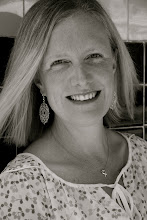
Two of my friends are heavily pregnant at the moment with their second children. One lives interstate and has suffered awful rib pain this time around; the other is on crutches due to pelvic pain. Thinking about them brings back the more unpleasant memories of late pregnancy but also the more pleasant ones of friends arriving with food parcels during that time.
Gifts of food are a bit like flowers: they are constant throughout the highs and lows life throws at us. I remember after our first baby was born, a very special friend arriving with small portions of her delicious lasagne and pasta sauces to stock in the freezer. When I think of my daughter’s early weeks, the taste of that lasagne is as memorable as her newborn baby smell.
After our second baby arrived another friend came to visit with a homemade curry, a small tub of natural yoghurt and a packet of pappadams. I remember being so appreciative of the extra touch with the side dishes. With two small children herself it seemed beyond thoughtful.
Eating food someone else has taken the time to cook and package up for you, for you to enjoy at a later date without them, is a most loving gesture of friendship. And perhaps most loving during times of hardship.
Joan Didion, in her wonderful memoir, The Year of Magical Thinking, wrote about a book of etiquette written by Emily Post in 1922. In her chapter titled Funerals, she discusses food and the bereaved. ‘Food, but very little food may be offered... tea, coffee, bouillon, a little thin toast, a poached egg.’ After the funeral friends are advised ‘it is also well to prepare a little hot tea or broth and it should be brought to them on their return without their being asked if they would care for it. Those who are in great distress want no food, but if it is handed to them, they will mechanically take it, and something warm to start digestion and stimulate impaired circulation is what they most need.’
Didion herself writes, ‘When someone dies, I was taught growing up in California, you bake a ham. You drop it by the house.’ But when her husband John died suddenly, ham was not what she wanted. ‘I will not forget the instinctive wisdom of the friend who, every day for those first few weeks, brought me a quart container of scallion-and-ginger congee from Chinatown. Congee I could eat. Congee was all I could eat.’
For me it was soup, after my father died. Perhaps because it’s easy to swallow around the permanent lump of grief that feels stuck in your throat in those early weeks or perhaps it’s the image of soup bubbling away on the stovetop in a friend’s home creating those comforting but gentle fragrances. Smells that will be packaged up and passed over your doorstep only to be recreated on your stovetop, in the comfort of your home. Such an evocative way to be reminded that you are loved and cared for.
Chicken Soup
Ingredients (serves 4)
4 (about 900g) chicken thigh cutlets, excess fat trimmed
1 large brown onion, halved, finely chopped
1 large carrot, peeled, finely chopped
1 celery stick, trimmed, finely chopped
2 large garlic cloves, finely chopped
2 tbs finely chopped fresh continental parsley stems
6 sprigs fresh thyme, leaves picked
2L (8 cups) water
1/2 tsp whole black peppercorns
Sea salt flakes
1/4 cup finely chopped fresh continental parsley, extra
Method
Combine chicken, onion, carrot, celery, garlic, parsley, thyme, water and peppercorns in a large saucepan over medium-high heat. Bring to the boil. Reduce heat to low and cook, covered, for 40 minutes or until vegetables are very tender.
Use tongs to transfer the chicken to a clean work surface. Hold with tongs and cut the chicken meat from the bones. Discard bones. Finely chop the chicken meat and add to the soup.
Taste and season with sea salt. Ladle soup among serving bowls. Sprinkle with extra parsley and serve immediately.

Recipe can be found here




































